Planespotting in Ulaanbaatar, a logbook
Once we were invited by MIAT Mongolian Airlines to visit Mongolia to try out their product to a trip report (which is coming soon), I started to think about all the planespotting possibilities.
After all, after eight years of hobby I’ve got an eye for rare catches; and whenever I go away from home, pretty much everything is «rare», let alone being so far away.
And in this regard, Mongolia didn’t disappoint; the planespotting was great, with ultra-rare catches (from the Western perspective at least)
So in this article, instead of a mere photogallery, I tried doing something different; a logboook, going along with a small description of each of the aircraft/photos. I hope you enjoy as much as I did.
And before anything, let me thank the friends we made during this trip, especially Chinsanaa Tsevegjav from MIAT and Kolya Enkhbayar, from the ATC division of Mongolia’s CAA and one of the few local planespotters, for making this all possible.
737-800 JU-1015 – OM7071 UBN-ZMKB
Right after arriving in Ulaanbaatar’s Chinggis Khaan International Airport, we went to the terminal entry nearby to benefit from the sunrise light that soaked the city.
The views didn’t disappoint: the first traffic of the day (of the few there are everyday, in fact) was this Boeing 737-800 of MIAT Mongolian, which departed to Oyu Tolgoi.
That is an airfield that serves the largest mine in Mongolia; because these flights are chartered by the mine operator, such flights are closed to the mine workers.
Registered JU-1015 and named «Guyug Khaan» after the third leader of the Mongolian Empire, this 737-800 is one of MIAT’s three active 737-800s.


A330-300 TC-JNZ – TK236 IST-UBN
Right after MIAT’s 737 taxied in front of us, it was time for Turkish Airlines’ Airbus A330-300 to arrive.
The A330-300 is the largest aircraft to regularly carry passengers to and from Mongolia, and it does so with several airlines.
This one, TC-JNZ, is named «Kartalkaya». As the airline that connects the most countries in the world, Turkish Airlines’ flight to Ulaanbaatar serves as one of Mongolia’s gateways to Europe, along with MIAT’s run to Frankfurt (MIAT also serves Istanbul by the way).
Both MIAT and Turkish Airlines serve the Istanbul-Ulaanbaatar route three times a week.
While this one was not necessarily a rare «catch», the stunning background and the good light conditions were obviously great.
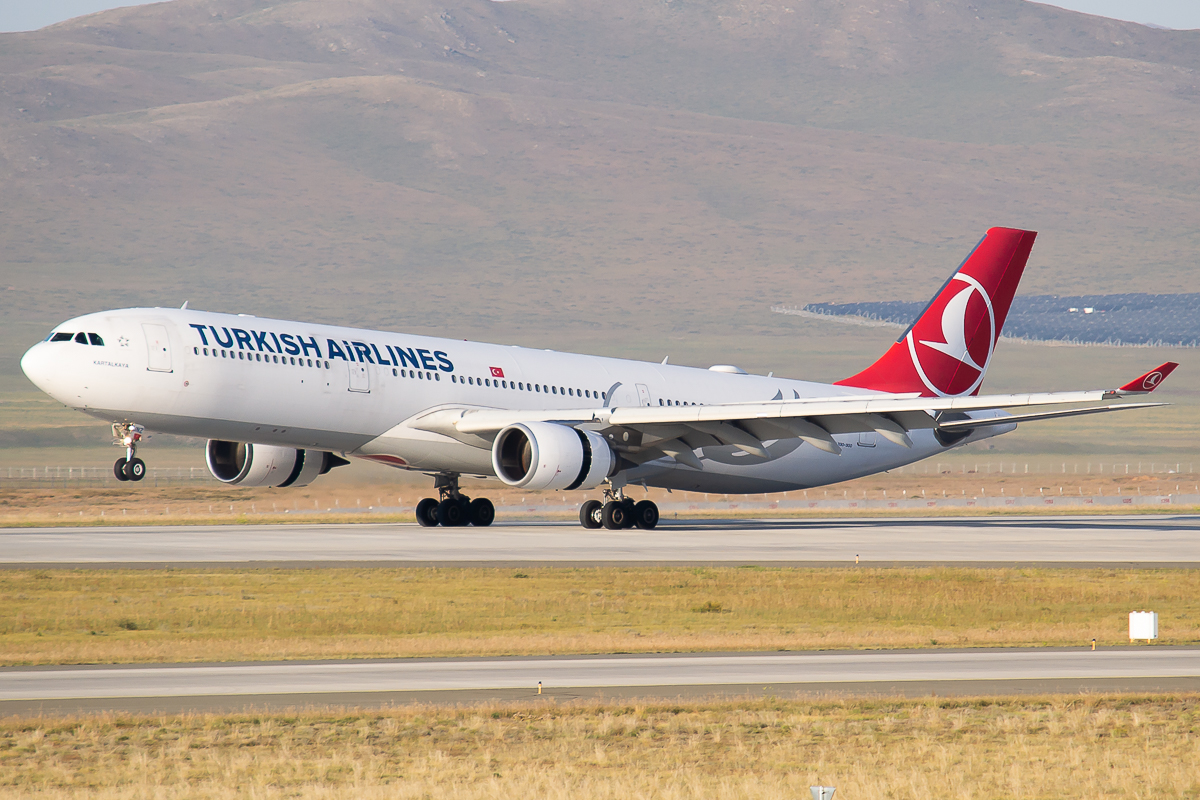

737-800 EI-CXV – OM311 UBN-PUS
Right after the Turkish Airlines A330, this, once another a MIAT 737-800, departed.
Named «Khubelai Khaan» after the Mongol emperor, this one celebrates the regional partnership between the airline and football team Borussia Dortmund with a special livery.
Headed to Busan, South Korea, in the single weekly flight MIAT offers between the two cities, this was our last photo of the day before a safety guy told us to go.
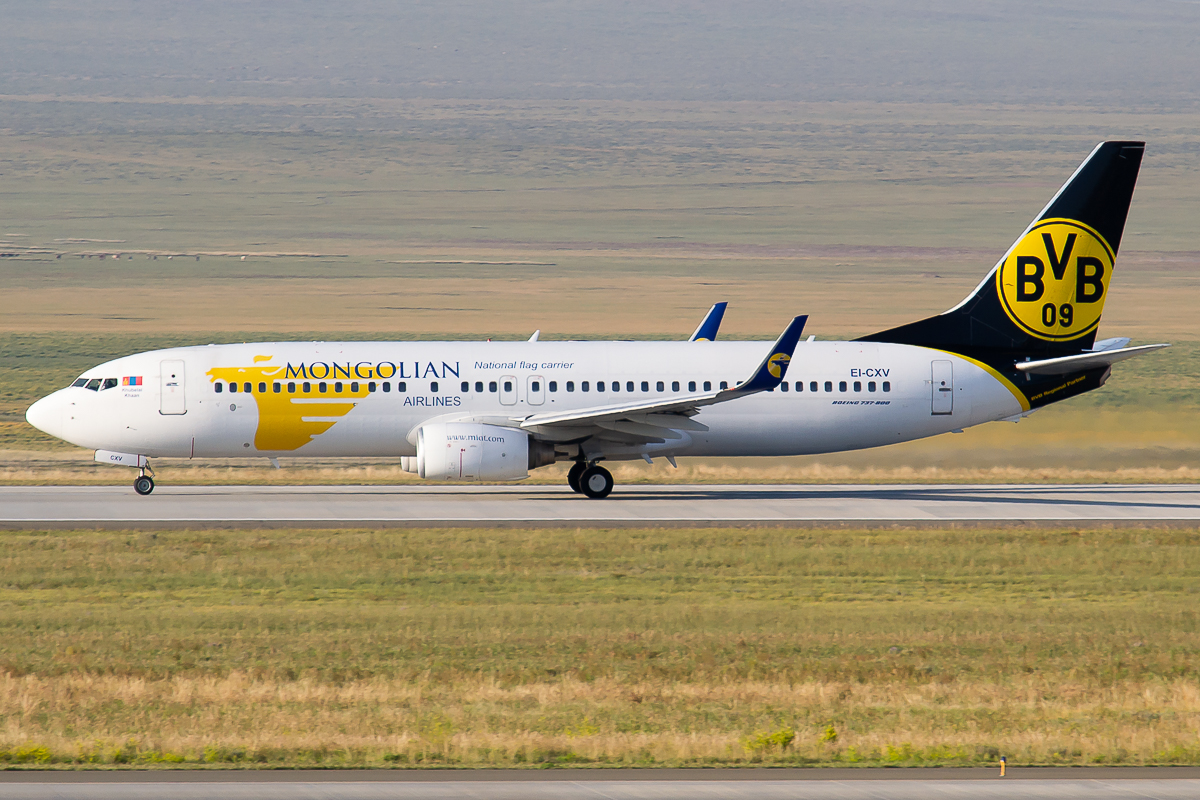
737-800 EI-CXV – OM301 UBN-ICN
As we climbed up the terrace of Ulaanbaatar International’s control tower, the first movement we saw was again EI-CXV, which was departing to Seoul.
South Korea has the largest community of Mongolians abroad, and as such, there is a relative multitude of flights between the two countries.
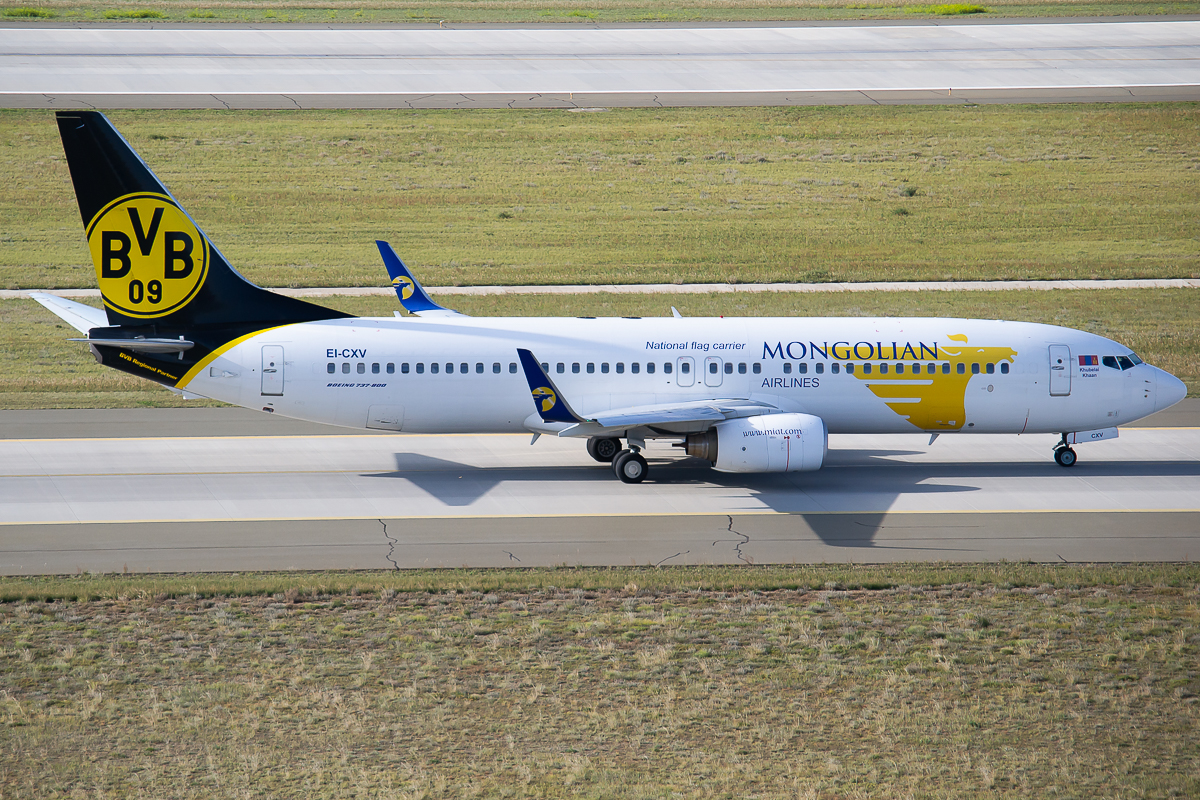
767-300ER JU-1021 – OM137 UBN-FRA
For me, the star of the show was this one — MIAT’s flagship (for now). Here, their only 767, named Chinggis Khaan, is seen taking off to Frankfurt, in what is the longest regular passenger flight from Mongolia.
The photo is complete with this fantastic background of the Mongolian countryside, which includes the traditional ger tents and the animal herdings.
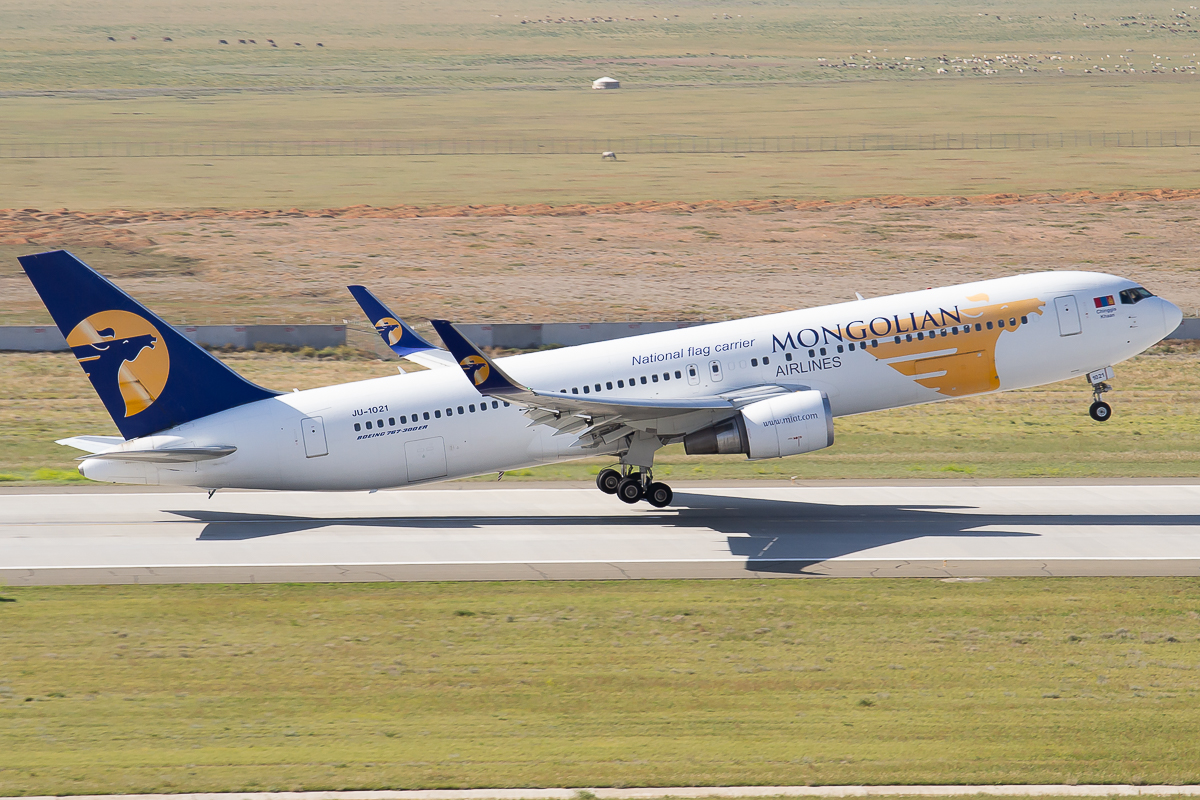
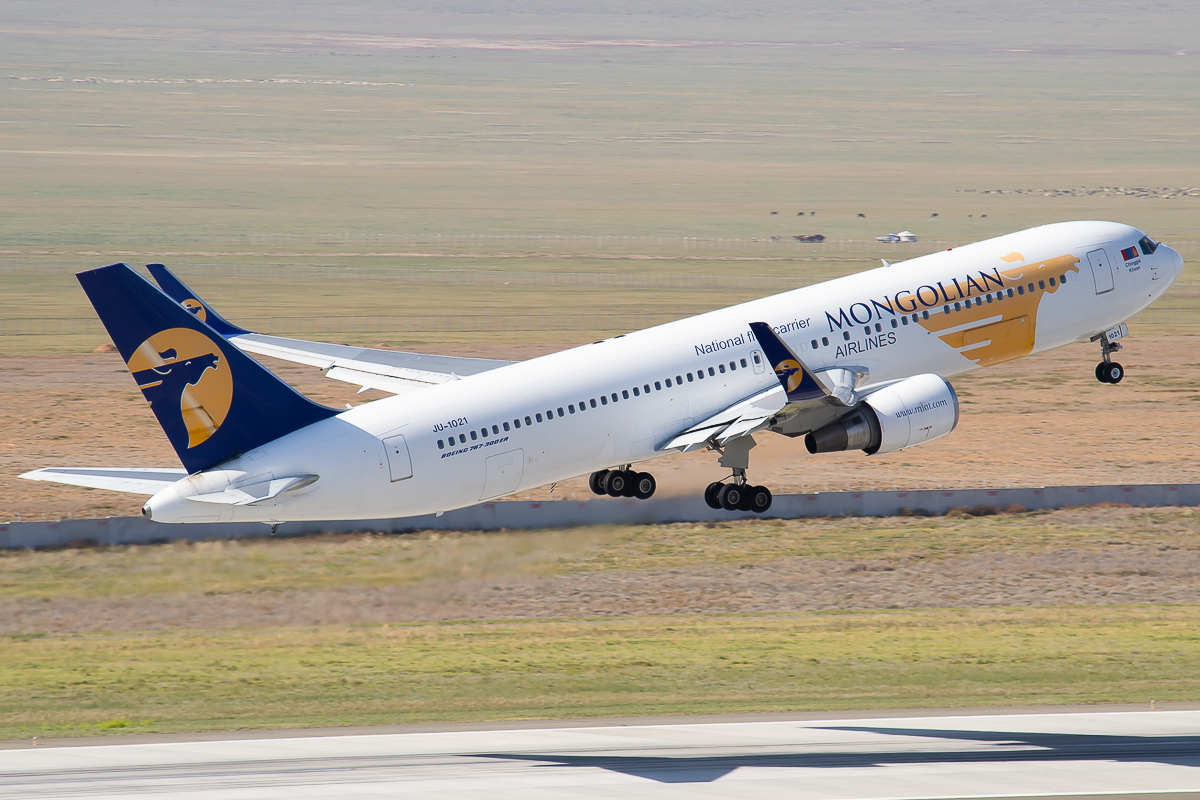
Embraer E145 JU-1802 – M0??? MXV-UBN
As a Brazilian, it makes me quite proud to see an Embraer airplane so far from home. So seeing this ERJ was great; Aero Mongolia operates two of the type and also an Airbus A319.
The airline’s regular network is quite limited, and this is one of the few runs to the city of Mörön.
According to Planespotters.net, JU-1802 was originally delivered in October 2004 as N577RP to Chautauqua Airlines, from the US. In 2015, the airline was absorbed into Shuttle America, for which it operated until 2019; the airframe flew under Delta Connection’s brand throughout its time in the United States.
In 2019, the plane arrived in Mongolia, as Aero Mongolia transitioned from a fleet of Fokker 50; it has been operating for the airline since.
Right after this flight, JU-1802 would depart on a run to Khovd via Uliastai.
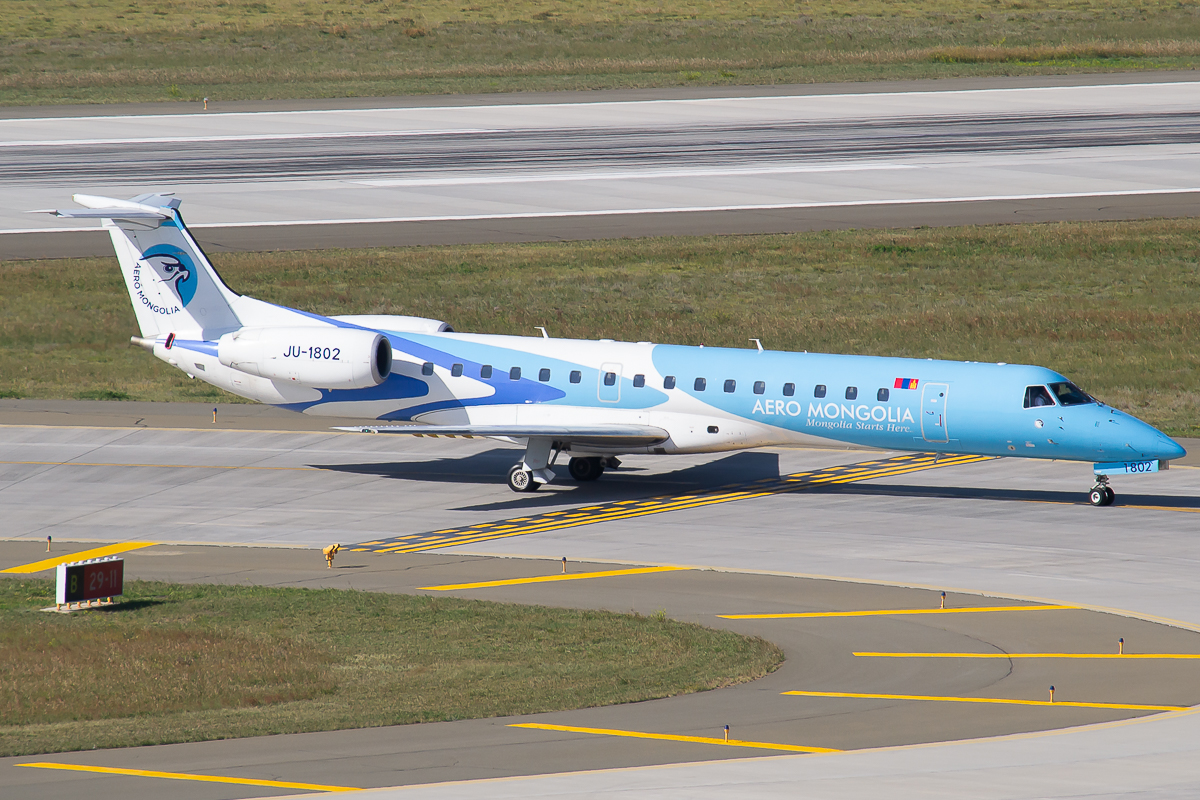

A330-300 HL7587 – KE867/868 ICN-UBN-ICN
This was another one of the flights connecting Mongolia and South Korea; Korean Air serves the city daily with the Airbus A330-300.
For this one, we managed to catch the arrival from the tower, whereas the departure back to Seoul we catched from a (restricted) point adjacent to the runway, obviously with the required safety clearances.


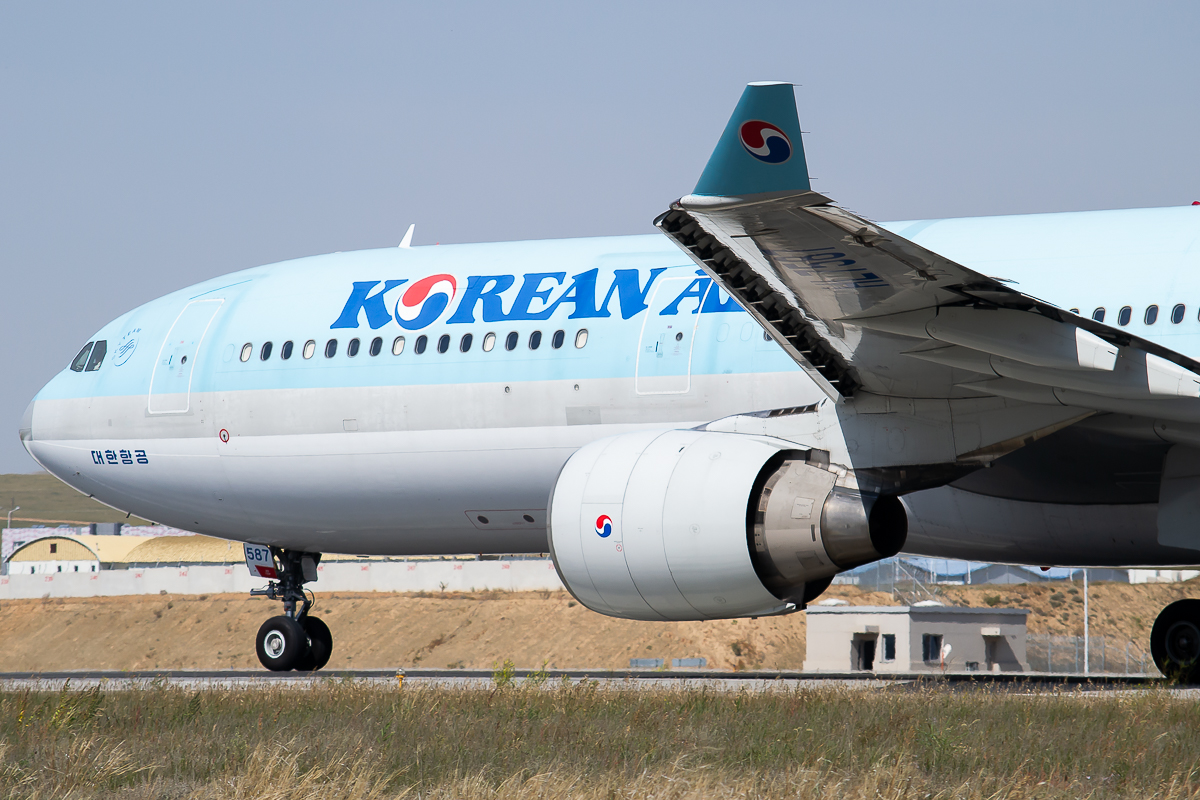
737-800 HL8333 – 7C5203/5204 ICN-UBN-ICN
Another of the South Korean airlines that serve Mongolia is Jeju Air, the country’s largest low-cost carrier.
Jeju Air serves Ulaanbaatar four times a week with flights from Seoul, and we were able to catch its landing from that runway spot, going back to the tower in time for the departure.

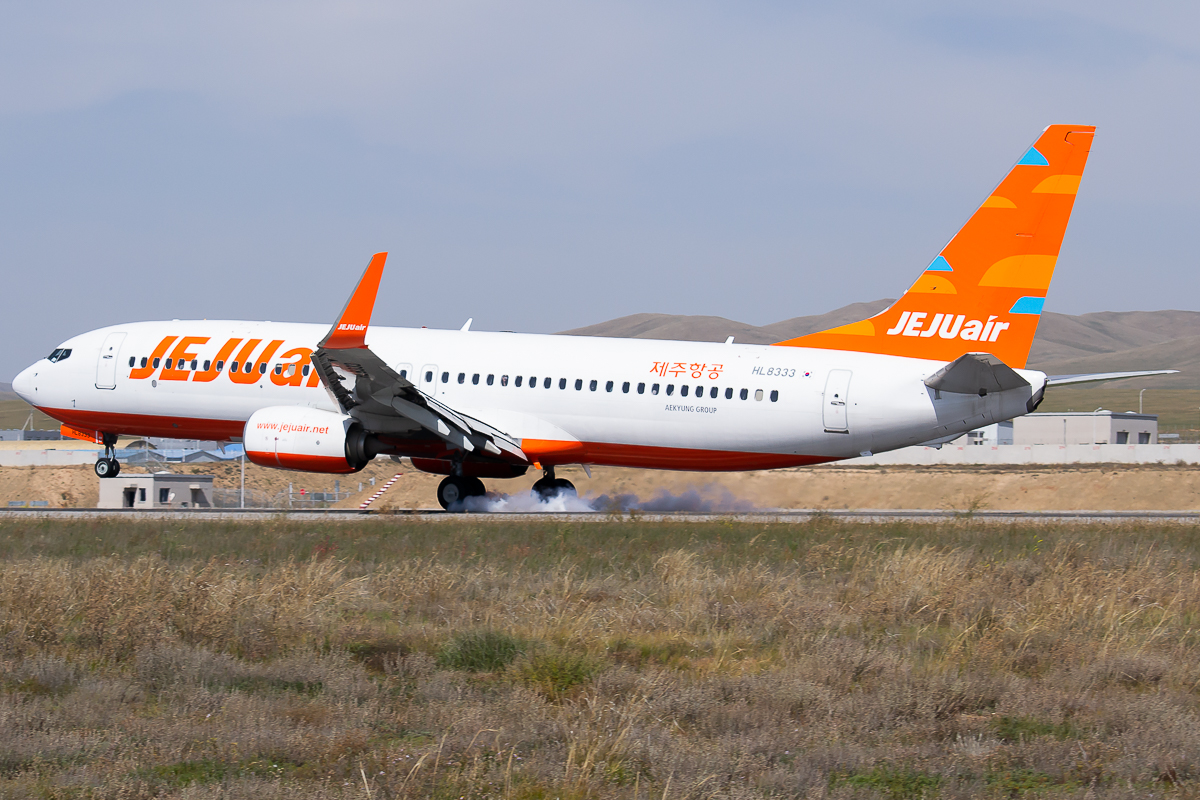
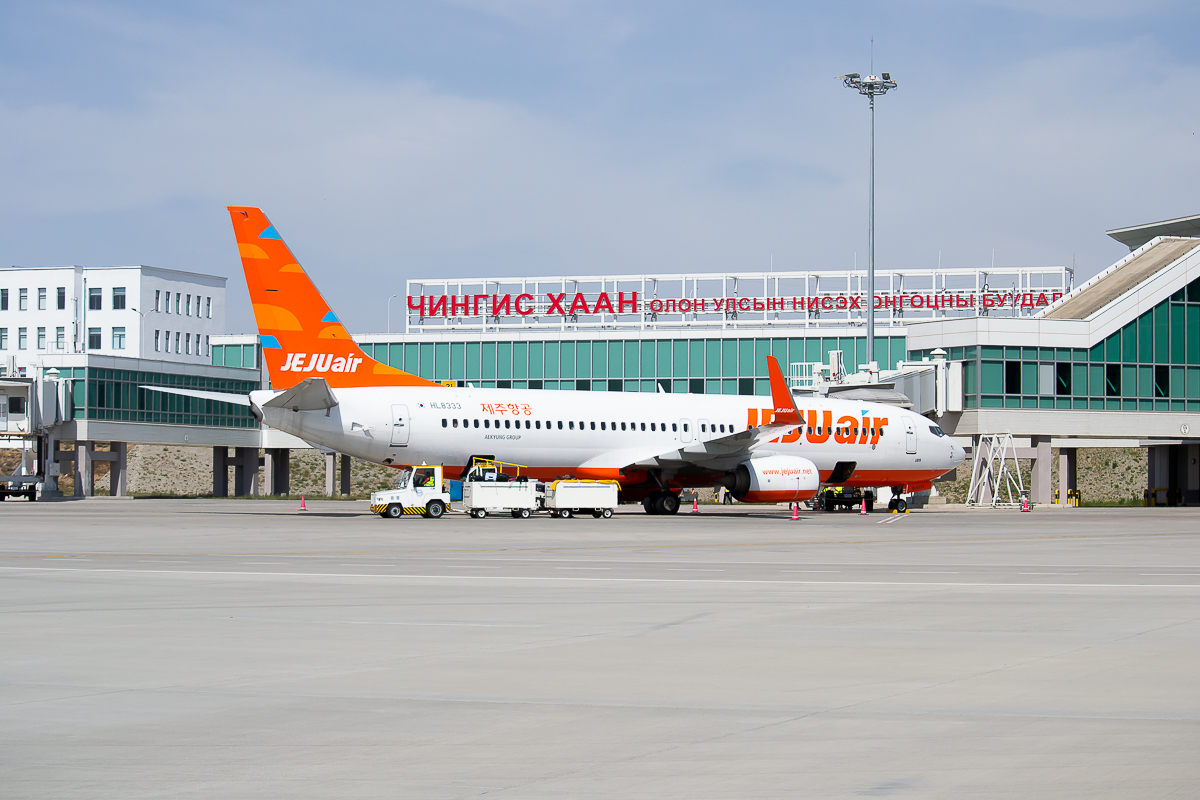

Fokker 50 JU-1050
There aren’t many active (let alone on passenger service) Fokker 50s around, so it was great to have a chance to spot this one while we transited, on the airport car, this one.
This one in particular is quite familiar: before heading to Mongolia, JU-1050 operated for ATSA Perú, an airline I’d paid a visit to back in 2018.
Mongolian Airways doesn’t even have an active website, so I think they keep operating charter flights to the country’s mines — especially because the Fokker doesn’t look like it’s in long term storage.
JU-1050 has almost 30 years of service, according to Planespotters.net: it flew for Royal Brunei Airlines, Air Nostum/Iberia Regional, Aero Condor in Perú and ATSA before being transfered to Mongolian Airways in 2021.

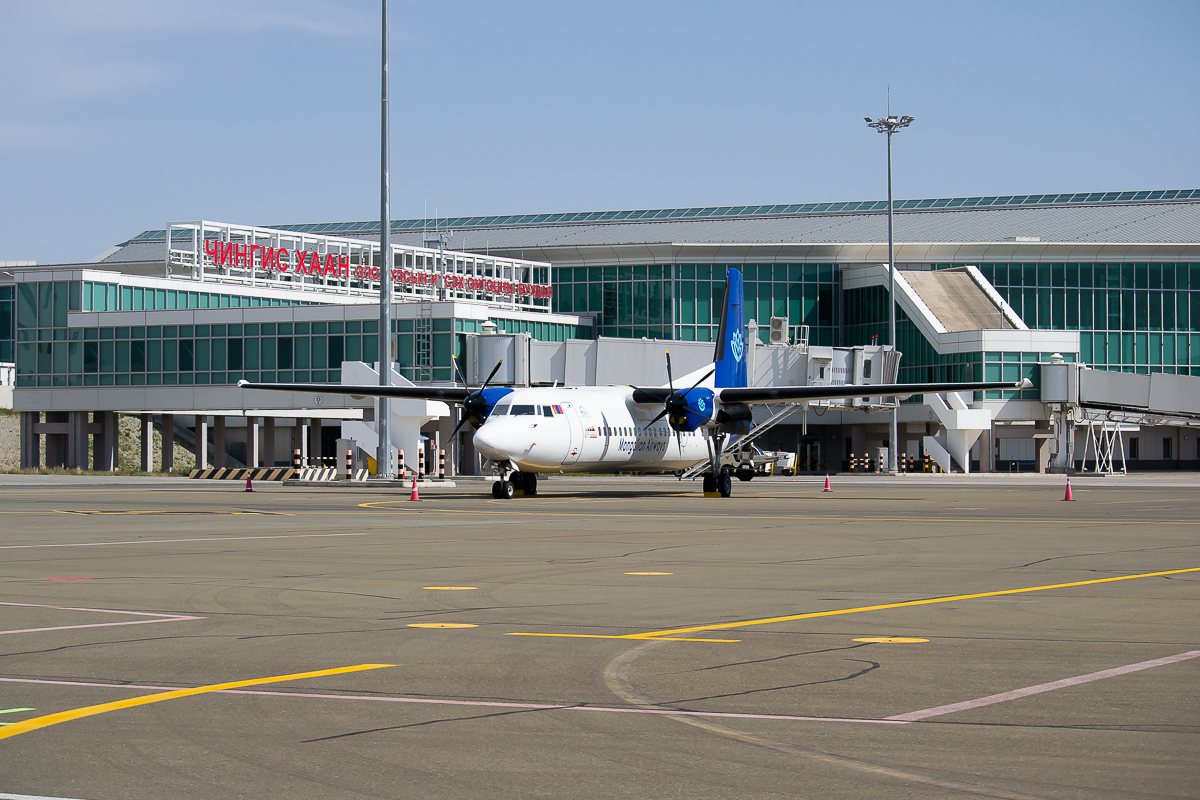
Gulfstream G550 N521GV
Another rare catch was this American business jet, which belongs to a proxy of the Samaritan’s Purse; apparently, the charity’s CEO was paying a visit to Ulaanbaatar that day.

Embraer 190 JU-8811 – MR422 FRU-UBN
This was the first time I managed to catch a good photo of this hometown plane. Hunnu Air operates a small fleet of ATRs and this single Embraer jet.
Here, JU-8811 is seen arriving from Bishkek; the airline operates two weekly runs to Kyrgyzstan’s capital.

Embraer 190 JU-8811
Two mornings later, when we had to return to Brazil, we managed to get some more pictures. This one, in the bridge where we were right after arriving, of Hunnu Air’s E190 being towed to the terminal.
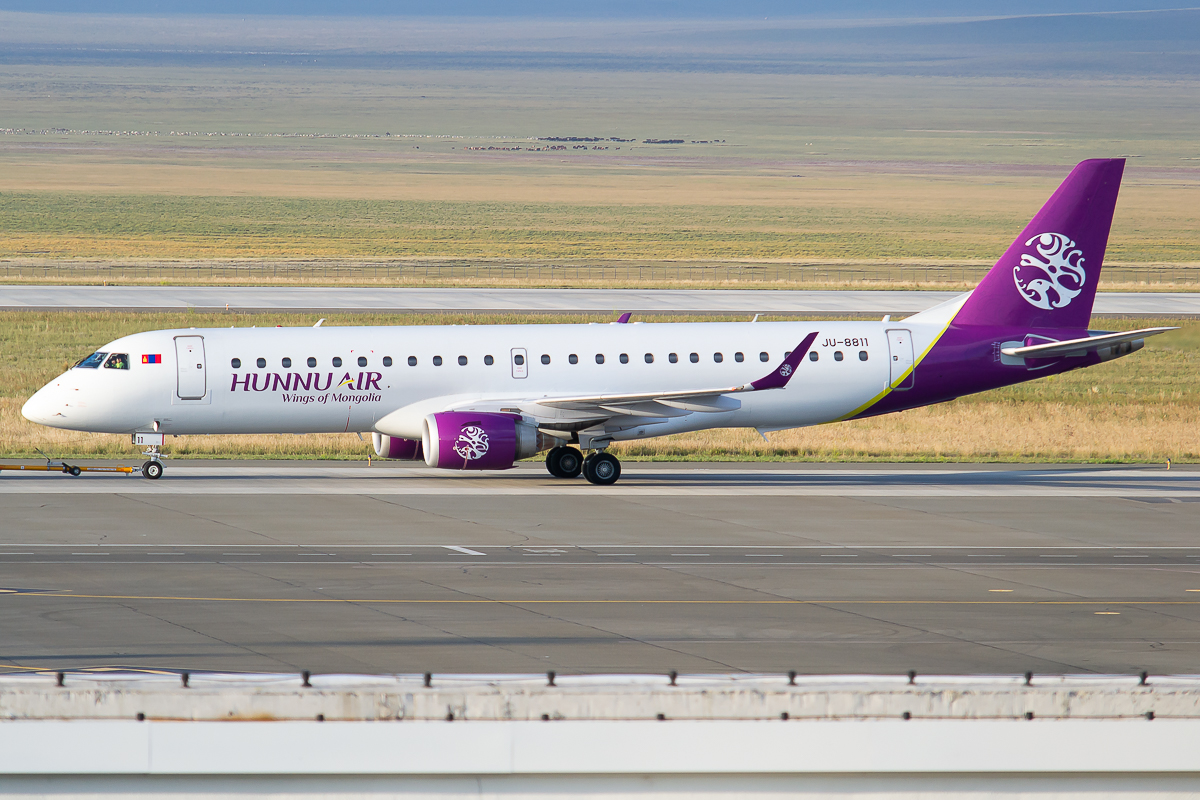
737-800 JU-1015 – OM501 UBN-NRT
And this one of «Guyug Khaan» taking off to Tokyo/Narita. This route is of particular importance for MIAT because of the partnership, started in 2020, with Japan Airlines; with it, passengers can get from Ulaanbaatar to Tokyo and then onto Los Angeles or San Francisco with JAL.

Embraer 190 JU-8811 – MR411 UBN-ALA
At this point we were inside the terminal, and while there are windows, they are very dark, so apologies for the quality of the photos.
This last set of pics of Hunnu Air’s E190 shows its departure to Almaty, Kazakhstan’s largest city; Hunnu Air serves the town twice weekly, and again it’s the only carrier serving the two cities directly.


Embraer E145 JU-1802 – M0??? ???-UBN
We also managed to capture some last pics of Aero Mongolia’s E145, which again was likely arriving from a domestic flight between a local mine and the capital.

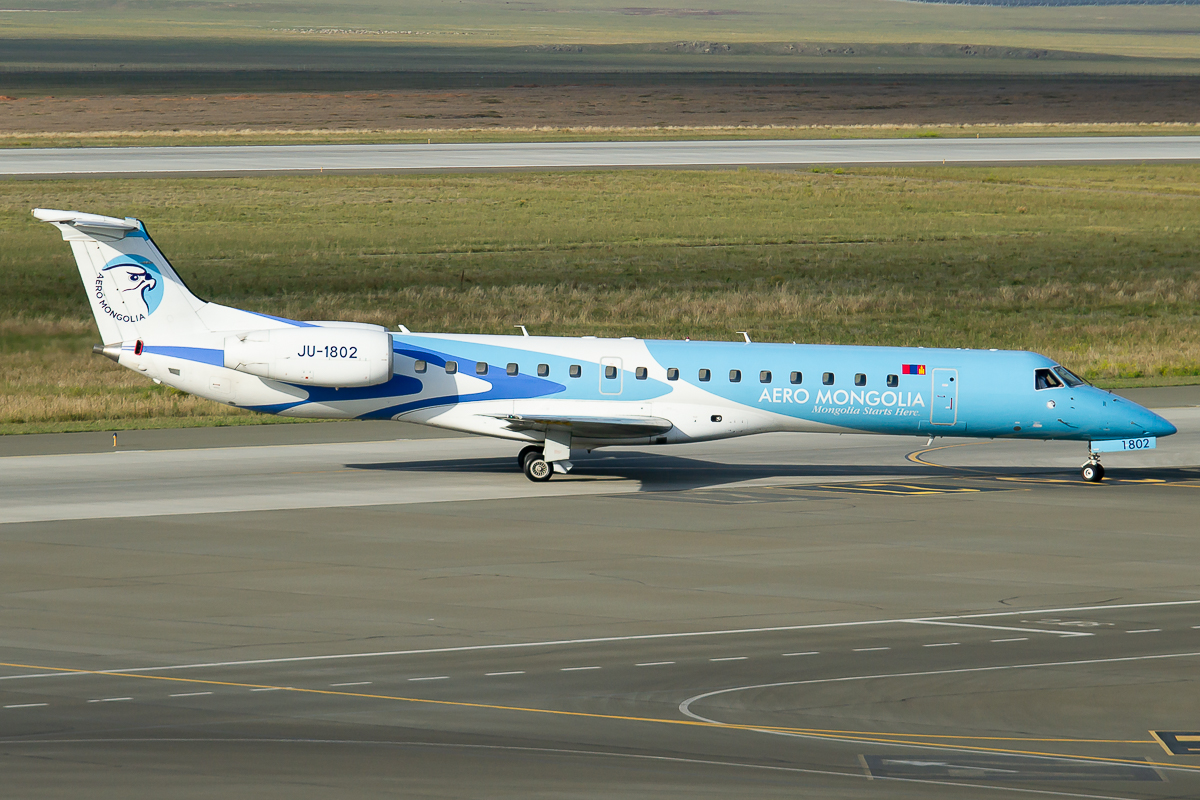
Boeing 747-400 B-2472 – CA??? UBN-KTM
After boarding our 767 back to Frankfurt, a very rare sight: Air China’s VIP 747-400 B-2472 was in Ulaanbaatar to carry the Speaker of China’s Congress, Li Zhanshu, to an official visit to Mongolia. The politician would then depart to another official visit to Nepal.
Notice the red carpet in front of the stairs — it’s a shame the light didn’t help, but we felt very lucky to see such a rare Jumbo. A worthy end to such a great visit to an amazing country.



Para comentar, debés estar registradoPor favor, iniciá sesión